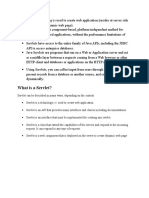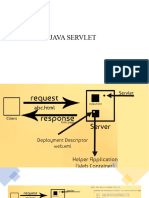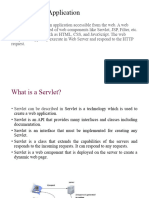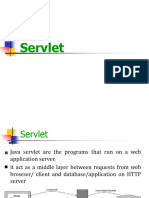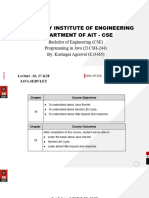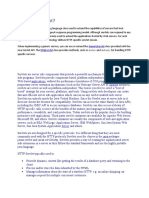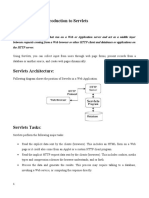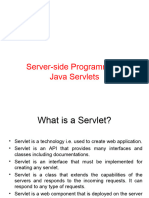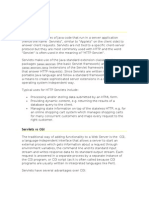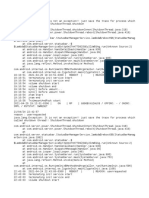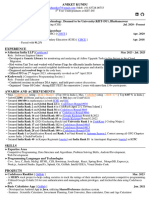0% found this document useful (0 votes)
22 views16 pagesServlet
Servlet technology is used for creating dynamic web applications on the server side, utilizing an API that includes various interfaces and classes. Advantages of servlets include better performance, portability, robustness, and security. The document also covers servlet lifecycle, HTTP request types, and the structure of servlet classes such as GenericServlet and HttpServlet.
Uploaded by
PranavCopyright
© © All Rights Reserved
We take content rights seriously. If you suspect this is your content, claim it here.
Available Formats
Download as PDF, TXT or read online on Scribd
0% found this document useful (0 votes)
22 views16 pagesServlet
Servlet technology is used for creating dynamic web applications on the server side, utilizing an API that includes various interfaces and classes. Advantages of servlets include better performance, portability, robustness, and security. The document also covers servlet lifecycle, HTTP request types, and the structure of servlet classes such as GenericServlet and HttpServlet.
Uploaded by
PranavCopyright
© © All Rights Reserved
We take content rights seriously. If you suspect this is your content, claim it here.
Available Formats
Download as PDF, TXT or read online on Scribd
/ 16



